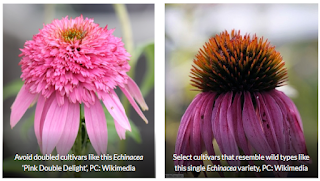 "Every gardener knows that under the cloak of winter lies a miracle ... a seed waiting to sprout, a bulb opening to the light, a bud straining to unfurl. And the anticipation nurtures our dream." - Barbara Winkler
"Every gardener knows that under the cloak of winter lies a miracle ... a seed waiting to sprout, a bulb opening to the light, a bud straining to unfurl. And the anticipation nurtures our dream." - Barbara Winkler
Clean Up – Continually clean up the debris as it dies. Old vines and stems provide places for insects and diseases to hide. Throw away plants that are suspect for bugs and disease to avoid passing them on to the next season. Designate an area for a compost pile if you don’t already have one. Add what you can to the compost pile or till back into the soil.
Soil Testing – This is a great time to get your soil analyzed because if you find out now that your soil needs amended, you can apply it in the fall so that it has all winter to work its way into the soil.
Cultivation – Cultivating the soil disturbs the life cycles of overwintering insect pests by exposing them to sun, birds, and freezing temperatures. Fall tilling helps keep soil loose and will make it easier to work in the spring. Leave the soil rough so it takes the full brunt of winter freezing, thawing, wetting, and drying. Winter’s freezes and thaws will assist in breaking up large clods. This weathering process will also allow the organic amendments to keep the soil open for winter moisture to percolate down more deeply.
 |
| Crimson Clover Cover Crop |
Cover Crop – In some areas of your garden you might consider planting a cover crop. They improve soil fertility, structure, water retention, and suppress annual winter weeds.

Leaves – Rake fallen leaves into areas of the garden that do not have a cover crop. Leaves can be used as a mulch in vegetable gardens, flower beds, and around shrubs and trees. Leaves rot very quickly and you will be surprised how many you can work into your soil. Leaf mulch encourages beneficial earthworms, soil microbes, and overwintering bumblebees.. They are also a great compost addition.
 Tools – Clean up your tools before storing them. A wire brush can help get the dirt off and oil can maintain the metal parts to keep from rusting.
Tools – Clean up your tools before storing them. A wire brush can help get the dirt off and oil can maintain the metal parts to keep from rusting. Garden Journaling – Keep adding notes to your journal so you can keep track of your successes or what you could have done better, what you might want to try again or simply remove from the list.

Tend your crops in your coldframes - carrots, lettuce, spinach, etc. Easy Peasy!
Now relax, close your eyes, dream about spring, and await those seed and gardening catalogs!







